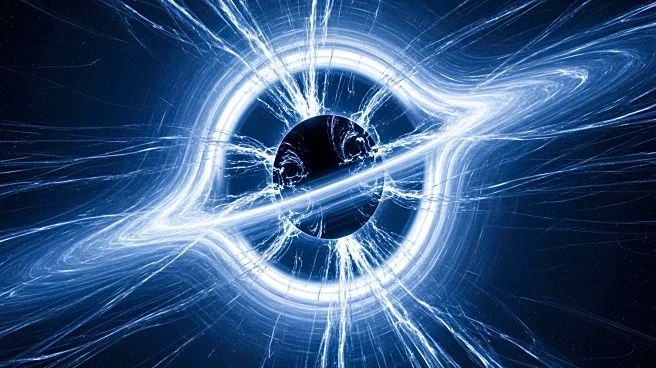What is the story about?
What's Happening?
An international team of astronomers has observed unexpected changes in the polarization of magnetic fields near the event horizon of the supermassive black hole M87*. The findings, published in Astronomy & Astrophysics, reveal that the polarization pattern flipped between 2017 and 2021, suggesting a complex internal magnetic structure. This discovery challenges existing models and highlights the dynamic nature of magnetized plasma near black holes. The Event Horizon Telescope's enhanced sensitivity allowed scientists to detect subtle polarization signals, providing new insights into black hole physics.
Why It's Important?
The discovery of dynamic magnetic fields near M87*'s event horizon is significant for understanding black hole behavior and the role of magnetic fields in matter accretion and energy emission. These findings push theoretical models to their limits, offering a deeper understanding of cosmic phenomena. The research underscores the importance of advanced observational techniques and international collaboration in astrophysics. Insights gained from this study could influence future research on black holes and their impact on surrounding matter.
What's Next?
The Event Horizon Telescope's ongoing improvements and new data will continue to provide valuable information about black holes. Future observations may reveal additional details about the magnetic structure and its effects on matter and energy dynamics. The research team plans to analyze the new data to further explore the complexities of black hole physics.
Beyond the Headlines
The study highlights the importance of international collaboration and technological advancements in astrophysics. The findings challenge existing models and encourage the development of new theories to explain black hole behavior. The research also emphasizes the dynamic nature of cosmic phenomena, prompting scientists to refine their understanding of the universe.
AI Generated Content
Do you find this article useful?

















